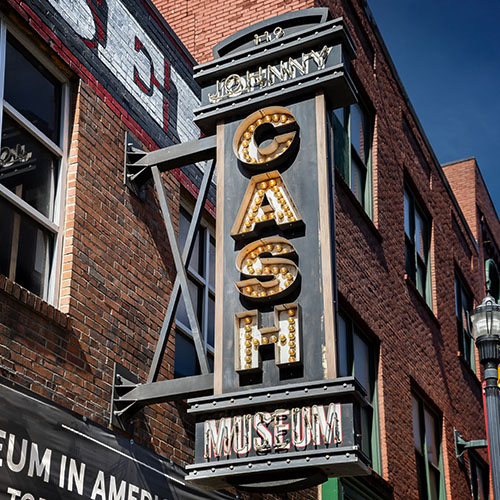They give us all they’ve got … and so much more.
Strippers and History
As is plainly known by anyone who, in the folly of his youth, tried to employ a copy of Sunshine and Health magazine as an accessory to the act of manual self-love, simple nudity does little to stoke, and less to slake, the flames of that divine prurience that alone distinguishes man from the beasts of the earth, the fishes of the sea. the fowl of the air, and the ABC Eyewitness News team.
Throughout history, the classic nude has connoted natural purity and prelapsarian innocence. “In naked majesty” dwelt Adam and Eve, wrote our supreme poet of metaphysical gastritis, John Milton, in Book IV of Paradise Lost. “Nor those mysterious parts were then concealed; Then was not guilty shame.” Indeed, according to Milton’s predecessor — God — couture preceded sex in the order of worldly things. Only after Adam and Eve had fashioned and donned their fig-leaf aprons, the Bible tells us, did he stick his mysterious part into hers.
Since that first fuck, most of those who have embraced nudity — from the four-teenth-century Adamites to the Utopian nudists of the present day — have done so in an attempt to renounce their concupiscence and live in Edenic innocence. (Anyone who has witnessed a gathering of nudists will agree that they seem to have succeeded in their purpose, so strikingly do they give the impression that they would be unable to get laid even if they had $50 bills pinned to their chests.) Only in rare and morbid instances — such as that of Pope Paul IV, the Jerry Falwell of the Renaissance, who had pants painted on Michelangelo’s Sistine-chapel nudes — has nudity in itself been regarded as obscene.
(We should here hold in mind the useful distinction, made by Kenneth Clark in his classic work The Nude: A Study in Ideal Form, between nudity, meaning the depersonalized, idealized human image, and nakedness, the imperfect individual bare body. Michelangelo’s depiction of Adam and Eve is an example of the former. An au nature! Dolly Parton passing forbidden grits to a bare Porter Wagoner would be an example of the latter.)
The truth of the matter is that it is not through our bare flesh that the erotic impulse is most powerfully conveyed, but through our clothing. Like the plumage and color markings of lesser species, clothes are the means by which the human sexes attract and arouse each other. More than 300 years ago, Robert Burton expressed this fact quite succinctly when he wrote, in The Anatomy of Melancholy, that “The greatest provocations of lust are from our apparel.” More recently, Anne Hollander, in her brilliant 1978 book Seeing Through Clothes, observed that “the Christian theory that clothing is unnatural or profane in its very essence, the result of man’s fall, undoubtedly grew out of the direct experience of the erotic pull of dress — even modest dress. People’s clothes had the effect of making their inferred nude bodies seem more, not less, desirable. Nakedness, of course, has its own fierce effect on desire; but clothing with nakedness underneath has another, and it is apparently even more potent.” Less eloquent, perhaps, but no less telling are the words of the late, great Lou Costello, delivered to an audience of three at the Comet Bar in downtown Newark on a fine spring day in 1958: “Who the fuck wants to look at a goddamned naked broad? Put somethin’ on her, for chrissake! High heels, a bathin’ suit, somethin’!”
The baring, not the bareness, is the thing that raises the clownish scepter of each vain and fleeting king.
Costello, as usual, was right. If the most beautiful nude Aphrodite of Praxiteles and the loveliest nude Venus of Titian do little to arouse our noble and unclean desires, what dare we expect of the gum-chewing checkout goddesses at the local supermarket? Not a whole hell of a lot, pals o’ mine, not a whole hell of a lot.
Wise, and best fit to serve their own ends, are those of Eve’s daughters who understand that the sensuality of Goya’s Naked Maja derives mainly from its juxta-position with the artist’s Clothed Maja; that the volleyball-playing Aryans of Sunshine and Health are no match for the temptresses who glide, Lycra-swathed, through the ladies’-underwear pages of the Sears catalog; and that, ultimately and truly, the voice of Lou Costello is the voice of all men.
Those who understand these things know that the baring, not the bareness, is the thing that raises the clownish scepter of each vain and fleeting king; and that regardless of how modesty or the uppity impatience of the little man in the boat beseeches milady to rush toward nakedness, the matter of disrobing is to be treated with all due artfulness and obscene subtlety, should she wish to render herself more desirable in the eyes of her sweet heart than, let us say, This Week in the NFL. For as Messrs. God and Milton so long ago observed, simply standing there in naked majesty is no way for a lady to go about the business of getting her brains fucked out.
History, like West 49th Street, abounds with tales of notable disrobings. The Greek myth of the Judgment of Paris dates from at least the eighth century B.C. To the wedding feast of Peleus and Thetis, the fated father and mother of Achilles, came all the gods and goddesses of the heavens, bearing gifts. The exception was Eris, or Discord, who arrived uninvited and threw to the ground a golden apple inscribed “For the Fairest.” Hera, the violently jealous wife of Zeus; Athene, the goddess of war and of wisdom; and Aphrodite, the goddess of love and of playing doctor, all claimed the apple. The contention was referred to Paris, the handsomest of mortal men. Hera offered him an empire, Athene offered him military glory, and wet Aphrodite offered him the most beautiful woman in all the world, Helen. Then the goddesses stripped, each in turn, as the handsome prince stood and stared, getting so worked up in the process that he chose the payola that Aphrodite had offered. Paris carried Helen off to his native Troy, and in so doing brought about the long Trojan War, in which the rejected strippers Hera and Athene supported the Greeks (and during the course of which, according to recent classical studies, more than a thousand men died for every ounce of princely sperm that lovely Helen swallowed).
The Judgment of Paris, the first great strip show, was written about, though not nearly as well as has been done here, by such ancient authors as Ovid and Lucian, and has inspired several masterpieces of the posed-the-way-ya-like-’em genre, by Cranach, Rubens, Watteau, and others.
We are told that Aspasia, the lifelong mistress of Pericles, the great Athenian statesman of the fifth century B.C.. ran a training school for whores in Athens, at which, among other things, was taught the art of seductive stripping.
Phryne, the most infamous whore of the classical world, and the model for several sculpted and painted Aphrodites of the fourth century B.C.. stripped for the whole of Athens during the feast of Poseidon every December. When she organized a club for young girls, ostensibly dedicated to the worship of the Thracian god lsodaetes but in actuality a sort of pagan Brownie pack for fledgling floozies, Phryne was charged with impiety and the corruption of morals. The distinguished orator Hyperides, who was one of Phryne’s johns, did his best to defend her, but Phryne herself persuaded the jury to acquit her — by stripping in court.
The story of Salome tells how, in the year 29, that sanguinary slip of an Idumaean danced the dance of dick hunger, stripping off the seven veils of her modesty before the lustful eyes of her stepfather, Herod. By the finale of her performance, Herod so burned to experience the miracle of love, doggie-fashion, with his step-daughter, that he offered to give her whatever gift might please her. Salome, by no means your average roses-and-anklet type of gal, asked for the head of John the Baptist, which she got — Herod’s hard-on thus having as disturbing an effect on Christianity as Paris’s had on international detente.
Originally told in the New Testament and in Josephus’s History of the Jewish Wars, the tale of Salome’s dirty dance has long fascinated the minds of men (or at least of those men who have believed that menstrual blood can wither flowers and induce dropsy). Francesco Bachiacca, Caravaggio, Guido Reni, Francesco del Cairo, Gustave Moreau, Aubrey Beardsley, and a guy who used to live downstairs from me on 15th Street have all portrayed her fateful dance. Oscar Wilde wrote a play about Salome on which Richard Strauss later based an opera. Theda Bara played Salome on film in 1918; Rita Hayworth in 1953.
In his scandalous Epigrams, Martial explained that the dancing girls of Gades, a Roman colony near the Spanish coast, were the most wondrously skilled in stripping and wriggling. They ended their dances, we are told, by sinking to the ground and reclining on their backs, thighs spread and buttocks quivering in rude oblation. Martial commented that the Gaditan dancers “might well stiffen trembling Pelias.” (Pelias, a son of Poseidon, was cut to pieces by his own daughters.) Juvenal, another observer of these Spanish dancers, described them, in his Satires, as “a sight to sting languid senses of love.”
Martial also recounted the yearly entertainments, based on the Judgment of Paris, in which a trio of Roman girls, in the roles of the Greek goddesses, stripped in competition before Emperor Domitian and his guests.
A later emperor, Elagabalus, added a twist to such entertainments. At a performance of the Judgment of Paris, which was acted in his luxurious palace, he himself played the part of Aphrodite. And as if this were not enough to set tongues wagging, Elagabalus closed the show with an added surprise, raising his imperial buttocks and summoning an attendant to do to him what he had previously done to the SPQR. What a guy.
Life was less lubricious in damp, stony Britain, and it is not surprising that the earliest reference to stripping in the English language, found in the twelfth-century Life of St. Juliana, is an act of sinful outrage: “He het hatterliche strupen hire steort na-ket!” In time, though, the harsh wimple fell from the face of British life, and in the seventeenth century we encounter our first full-blown piece of strip poetry, from the pen of none other than that bell-tolling, panty-sniffing Anglican preacher, John Donne:
Off with that girdle, like heaven’s zone glistering,
But a far fairer world encompassing.
Unpin that spangled breast-plate, which you wear,
That th’eyes of busy fools may be stopped there.Unlace yourself, for that harmonious chime.
Tells me from you that now ’tis your bed time
Off with that happy busk, whom I envy,
That still can be, and still can stand so nigh.Your gown’s going off such beauteous state reveals,
As when from flowery meads th’hills shadow steals.
Off with your wiry coronet and shew,
The hairy diadem which on you doth grow.Off with those shoes: and then safely tread,
John Donne, To His Mistress Going to Bed (1593)
In this love’s hallow’d temple, this soft bed.
We notice that when the bell tolls, it tolls for thee, but when some bimbo strips, she strips for him. So much for that no-man-is-an-island shit. An anonymous madrigal of the same period put the issue quite simply and sweetly:
No beauty she doth miss
Some Anonymous Brit, My Love in Her Attire
When all her robes are on,
But Beauty’s self she is
When all her robes are gone.
In The Soldier’s Fortune, Restoration playwright Thomas Otway had one of his characters specify, “Be sure that they be lewd, drunken, stripping whores.” A few years later, in 1695, the Grub Street pamphleteer, Ned Ward, in his Female Policy Detected, warned of the disappointments that are often wrought by stripping women of their clothes. “Many in rich ornaments,” he wrote, “look inviting whose beauty, when they undress, flies away with their apparel, and leaves you (as Juno did Ixion) nothing but a cloudy mistress to embrace.”
The third act of Richard Steele’s 1701 comedy The Funeral, or Grief a la Mode, includes a scene in which the young Frenchwoman Ml le. d’Epingle offers to strip for the edification of a staid British couple. The Englishwoman replies, aghast, that she has never so much as dressed, let alone undressed, before her husband. (In light of this wifely attitude, it is not difficult to see how pornography became such an important industry in eighteenth-century England, leading to the attorney general’s anti-smut campaign of 1745.)
It was in the America of the nineteenth century that stripteasing finally became a defined, recognized and appreciated art form. As early as 1843, in his poetic drama The Spanish Student, we find Henry Wadsworth Longfellow looking down his sensitive nose at “a mere dancing-girl, who shows herself nightly, half-naked, on the stage, for money.”
By 1847 the American Theatre in New York City was, it is known, presenting revues that featured dancing girls in various states of dishabille. In the spring of 1904. the exotic (read “dirty”) dancer Little Egypt became the sensation of the St. Louis Exposition. At the Mason Opera House in Los Angeles, in 1908, Anna Held, the first wife of the impresario Florenz Ziegfeld, disrobed behind a screen as an orchestra played a song called “I’d Like to See a Little More of You.” By the following year, the Columbia Theatre in Manhattan was staging shows with titles such as “Tease for Two” and “Strip, Strip, Hooray.”
At the Hippodrome in San Francisco, in 1913, an act known as the Skevo Brothers (whose immortality has apparently been overlooked) presented a young lady named Mazie, who stripped behind a white shadowgraph. In 1915, at the Academy of Music in Pittsburgh, someone calling herself Mlle. de Leon, the Girl in Blue, appeared onstage in an old-fashioned opera coat and carrying a parasol. Tossing aside the parasol and removing her coat, she revealed herself in naught but a leotard, creating a scandal of no small size.
In the early twenties a girl named Mae Dix devised a striptease number involving newspapers. Clad only in pages and pages of the inky stuff, she stood onstage reciting headlines to music, allowing box-seat patrons to tear sheets of paper from her at each interlude.
The modern bump-and-grind striptease — with which we associate G-strings (originally a nineteenth-century term for the cache-sexe of American Indians), long mesh gloves, and torpid, smoke-shrouded drummers who took a wrong turn somewhere along the line — was born in 1928. Two women active that year — Hinda Wassau, in Chicago, and Carrie Finnell, in Cleveland — have laid claim to the title of Mater Denudata, each arguing that she set the style that all other strippers have since followed. (Carrie Finnell, billed at first as “The Girl with the Million-Dollar Legs,” eventually invented tit tassel-twirling, and so became known as the Remote-Control Girl.)
The 1930s were the golden days of stripping, and the queens were many. The most famous, of course, was Gypsy Rose Lee (who was born, in 1914, with the more prosaic name of Louise Hovick). More than a mere public discarder of cloth, she was also the author of three best-selling books (her first, the 1941 G-String Murders, was made into a movie with Barbara Stanwyck) and a hit Broadway play, The Naked Genius.
“It is better left to psychologists to explain why stripping is the most powerfully erotic of all non-copulatory acts, even that of counting money.”
Almost as celebrated was Ann Corio, a former Sunday-school teacher from Hartford, Connecticut. There was Margie Hart; Yvette Dare, whose trained parrots and cockatiels fluttered round her, snatching off her silks and satins on cue; Zorita, who used boa constrictors; and Lois DeFee, who stood over six feet tall and, to stir up some publicity, once married a midget for a few days. Georgia Sothern, a redhead with a notoriously nasty grind, wrote a letter in the spring of 1940 to the noted author and critic H. L. Mencken, telling him how much she had enjoyed his study The American Language, and asking him to “coin a more palatable word to describe this art” of stripping. Mencken wrote back offering, he later recalled, “the scientific name for molting, which is ecdysis.” From then on, Georgia Sothern was no longer a striptease artist, but an ecdysiast. No change in her act, however, was discernible.
The golden days of stripping came to a sudden end on May 2, 1937, when Mayor Fiorello La Guardia officially banned burlesque in New York City, the striptease capital of the world. According to a contemporary newspaper report, Mayor La Guardia “stood squarely behind Police Commissioner Lewis J. Valentine, who charged that the striptease is largely responsible for the current wave of sex crimes.”
While stripping continued in the secondary cities of America (most conspicuously in Newark, where the Empire Theatre served as a seedy sanctuary for the big-name strippers who could no longer serve their muse on the other side of the Hudson), the glory had been drained from this most magical of the lower arts.
A few younger strippers, such as Lily St. Cyr, rose to fame in the forties and fifties, but for the most part, as fewer and fewer theaters offered them employment, strippers receded more and more into the demimonde of cheap, unmemorable movies, such as the 1955 Varietease (surely you recall it) and the tawdry fetish magazines — Beauty Parade, Showgirls, Whisper, Flirt, and others — that bloomed in the years after World War II.
Whenever a popular art, be it Western movies or rock and roll, attracts the serious attention of scholars and pedants, it is a good indication that the particular art is dead or dying. As early as 1937, the British anthropologist Geoffrey Gorer, returning from six months in darkest America, had taken it upon himself to explain the complex and hidden meaning that was at the heart of the striptease. Telling us that certain undeniable similarities tied the striptease to fertility rituals of west Guinea, Mr. Gorer then turned his anthropological eye toward the patrons of the striptease. “This,” he wrote, in Hot Strip Tease and Other Notes on American Culture, “is their only dream, and they go by themselves, shut in, intent, determined to exclude the life they know; if they concentrate hard enough maybe they will get the physical illusion of reality. For that, after all, is the real reason why daily thousands of June Glories undress themselves with elaborate and hieratic gestures behind the invisible barrier of the footlights; the aim of the Hot Strip Tease, as it is cynically called commercially, is simply to provoke sad and solitary pleasure.”
If we are to learn anything at all from Mr. Gorer’s words, it is this: Never go to bed with an anthropologist.
But it was the French, those most silly mamelukes of intellectualism, who found in le striptease an ontological doctrine of no mean importance. The unintended humor of Frangois Des Aulnoyes’s 1957 Histoire et Philosophie du Striptease is surpassed only by that of Denys Chevalier’s 1960 Metaphysique du Striptease, in which copious quotes from Sartre, Hegel, Nietzsche, Descartes, and the Talmud dance incongruously around photographs such as that of Dolly Bell, dans un mouvement de grind.
By then the classic American striptease was something of the past, to be revived in a couple of years, but only as nostalgia, in Ann Corie’s 1962 Broadway show, This Was Burlesque. What had disappeared from the stages of America, however, flourished in the bedrooms of America. Best-selling record albums offered munitions for the war against flaccidity: How to Strip for Your Husband and Music to Strip for Your Man By. (The instructional tract included in the latter album stated that “as you follow our explicitly illustrated booklet, you will gain an inner feeling of prowess, of control, of self-being…. This album can do it all for you, if you let it, and if you give your all to it. Isn’t it time you spiced up your living a bit? Isn’t it time for you to take charge, ladies? Can you do it? Yes! Yes! Will you do it? Yes! Yes! Damn right!” Now go out there and drop those undies for the Gipper.) The biggest hit single of the summer of 1962 was David Rose’s “The Stripper.”
It is better left to psychologists, if not to outright Frenchmen, to explain why stripping is the most powerfully erotic of all non-copulatory acts, including even that of counting money. It is, like poetry or a good blowjob, simply one of those things the nature of which — if one must ask — one will never truly understand.
I recall an evening in November 1979 when David Susskind was fortunate enough to have the esteemed, albeit aging, strippers Sherry Britton, Georgia Sothern, and Zorita on his syndicated television show. Mr. Susskind, as is his wont, twisted and puckered his noble face into the very picture of constipated anguish, then asked why a man might want to watch a woman strip. Georgia Sothern rolled her eyes, shot him a glance that could stop a clock, then turned away and softly smiled, as if silently thanking the Lord that she wasn’t Joyce Susskind.
The mysteries of stripping are subtle and many. The vestments themselves are of the greatest concern, enabling milady, through color and cut and texture, to transform nine stone of gal-meat into an instrument of almighty wonder, capable not only of moving mountains but of inflaming the ballocks of the most jaded and fucked-out of gentlemen callers with a single sudden jut of the os pubis.
“It is only with scent and silk and artifices that we raise love from an instinct to a passion,” wrote the Irish novelist George Moore in his autobiographical My Dead Life. Some strippers, portraying innocence defiled, favor white and pastel pink and lavender. But red and black are the true colors of lust and of sin (and, alas, of gathering lint — but we won’t speak of that). According to Anne Hollander, “Mourning black for women indeed acquired a new literary and Romantic emphasis, as narrative painting from the nineteenth century shows — an emphasis deriving directly from the satanic and fatal eroticism of black clothing in the early Romantic imagination.” The color of Miss Hollander’s own panties are, however, left to the fancy of the reader. (Come to think of it, why are we never apprised of the color and style of our authors’ undies? Surely to know that, let us say, Carson McCullers wrote the closing pages of The Heart Is a Lonely Hunter wearing mauve tap panties with white trim would help us to better understand that lady’s novel. It is astounding that, until this very moment, the fertile field of literary lingerie has had so very few serious students.)
Gypsy Rose Lee felt that it was all in the shoes. “A near-naked woman and near-naked shoes have the same thing in common — the illusion that the best parts are hidden,” she is quoted as saying in William Rossi’s The Sex Life of the Foot and Shoe. “It’s the near-naked look that brings a male audience to a pitch. The first thing I ever considered with every costume I wore on stage was: Are the shoes sexy? If they weren’t, the rest of the costume didn’t mean a damn, because when everything was stripped, all that was left was the G-string and the shoes. You and the shoes were the whole show. I can recall regulars in the front rows who nearly went out of their minds looking not at me but at my shoes.” (And she wasn’t talking about Adidases, either.)
The variations and eccentricities are infinite. Charles Baudelaire preferred women to strip down to their jewelry. (“My well-beloved was stripped. Knowing my whim,/ She wore her tinkling gems, but naught besides,” he wrote in his poem “The Jewels.”) Another poet, C. P. Cavafy, spoke of the “Enjoyment of the flesh through/ half-torn clothes.”
The greater the imagination, the greater the ecstasy. What it comes down to is the ineffable, thrillsome electricity that crackles between the cathode and anode of desire and the deed, belonging neither to the one nor to the other, but to that base and majestic lust that is the master of both. That such a force should reside in a pair of fuck-me pumps or a red-lace brassiere that unhooks in the front is a mystery that neither Mr. Wizard nor Carl Sagan has yet solved for us. But a good look into the steaming eyes of Sophia Loren as she strips for Marcello Mastroianni in the central tale of Yesterday, Today and Tomorrow will likely prove more revealing than anything to be gotten from Messrs. Wizard and Sagan.
We have come a long way — you, myself, and what’s-her-face over there — since being eighty-sixed from the Garden of Eden. We have seen much, done much, learned much. But we must never forget the one reason we are on earth: namely, to take off our clothes.
Go then, fairest of the fair, and what’s-her-face, too; go then, and do it. You may not start another Trojan War; you may not be presented with Oral Roberts’s head on a silver plate; you may never be held responsible for a crime wave in a major city; but you can sure as sunrise knock the wind out of This Week in the NFL. … Pants down.
We can admit it: We do not often quote John Donne in our magazine, but we appreciate it here, adding one small note that despite a sort of “strip fascination” in much of his wholly impressive work, Mr. Donne actually became a cleric in the Church of England. Maybe we have not given that religion enough though, come to think of it. … We definitely need to try and work “hairy diadem” into our conversations more often, though. [A diadem is a crown. … Also, Dolly Parton and Porter Wagner were much more of a thing back in 1984. -Ed.]
























